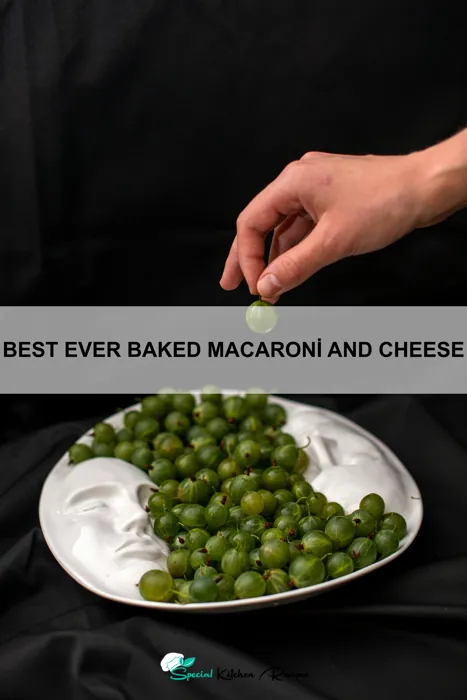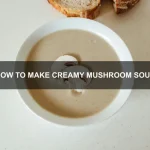Macaroni and cheese, a dish so beloved it transcends cultural boundaries, boasts a history as rich and creamy as its most decadent versions. While pinpointing an exact origin is difficult, its roots can be traced back to 14th-century Italy, where pasta was first introduced. Early versions, however, differed significantly from the comforting casserole we know today. They lacked the cheese sauce so central to the modern iteration, often relying on simple butter and cheese sprinkled over cooked pasta. The dish’s evolution is intrinsically linked to the availability of ingredients and culinary traditions of various cultures, transforming over centuries.
The journey of macaroni and cheese to its current iconic status is a fascinating one. Its popularity exploded in the United States, particularly during the 19th and 20th centuries, becoming a staple in American households and a symbol of comfort food. The invention of processed cheese in the early 20th century played a pivotal role, allowing for a smoother, more consistent sauce, and making the dish easier to prepare for the average home cook. This accessibility led to a surge in its popularity, solidifying its place in American culture. Interestingly, cheese production statistics show a dramatic increase in cheese consumption coinciding with the rise of macaroni and cheese as a national favorite. While exact figures are difficult to isolate, the correlation is undeniable.
Beyond its presence in American kitchens, macaroni and cheese has infiltrated popular culture in countless ways. It’s a frequent guest star on restaurant menus, from upscale establishments offering gourmet variations to casual diners serving classic comfort food. Statistics show that it’s one of the most frequently ordered side dishes in many restaurants across the country. This enduring popularity is fueled not only by its delicious taste but also by its nostalgic associations, evoking memories of childhood and family gatherings. It’s a dish that transcends generations, uniting people through a shared love of its creamy, cheesy goodness. This recipe, our Best Ever Baked Macaroni and Cheese, aims to capture the essence of this beloved dish, delivering a truly unforgettable experience.
Ingredients and Measurements
This recipe for the Best Ever Baked Macaroni and Cheese relies on high-quality ingredients to deliver exceptional flavor and texture. Accurate measurements are crucial for achieving the perfect creamy, cheesy bake. Don’t be tempted to substitute ingredients without considering the impact on the final dish.
Pasta: 1 pound (450g) elbow macaroni. We recommend using a high-quality dried pasta, as it holds its shape better during baking. Avoid using short-cut pasta shapes like shells, which tend to overcook and become mushy in a baked mac and cheese. Ensure the pasta is cooked al dente, slightly firm to the bite, as it will continue to cook in the oven.
Cheese Sauce: The heart of this recipe lies in its rich and flavorful cheese sauce. We’ll be using a combination of cheeses for a complex and satisfying taste. Use freshly grated cheese whenever possible, as pre-shredded cheese often contains cellulose which can prevent it from melting smoothly. Here’s the breakdown:
- 1 cup (2 sticks) unsalted butter: Use good quality butter for the best flavor.
- 1 cup all-purpose flour: This is the base of our roux, which thickens the cheese sauce. Use a whisk to create a smooth roux, preventing lumps.
- 6 cups whole milk: Whole milk adds richness and creaminess. Avoid using low-fat milk, as it will result in a thinner, less satisfying sauce.
- 1 teaspoon salt: Adjust to your taste preference.
- 1/2 teaspoon black pepper: Freshly ground black pepper is always best.
- 2 cups (8 ounces) sharp cheddar cheese, freshly grated: Provides a sharp, tangy flavor.
- 2 cups (8 ounces) Gruyere cheese, freshly grated: Adds a nutty, complex flavor.
- 1 cup (4 ounces) Monterey Jack cheese, freshly grated: Contributes a mild, creamy texture.
Other Ingredients: These additions enhance the overall flavor and texture:
- 1/2 cup bread crumbs: Use panko bread crumbs for a crispier topping. Toast the bread crumbs lightly in the oven before adding them for extra crunch.
- 2 tablespoons melted butter: Used to coat the bread crumbs for extra browning and flavor.
Important Note: Prepare all your ingredients before you start making the cheese sauce. This ensures a smooth and efficient cooking process. Having everything measured and ready to go will prevent burning the roux. Enjoy your Best Ever Baked Macaroni and Cheese!
Equipment List
Creating the best-ever baked macaroni and cheese requires the right tools to ensure even cooking and a perfectly creamy texture. This equipment list details the essential items, along with recommendations for optimal results. While some substitutions are possible, the items listed below will provide the most consistent and professional outcome.
Large Pot (at least 6-quart): You’ll need ample space to cook the pasta. A 6-quart or larger pot ensures that the macaroni cooks evenly without overcrowding. Overcrowding can lead to unevenly cooked pasta and a sticky mess. Choose a pot with a heavy bottom for even heat distribution.
Colander: A sturdy colander is essential for draining the cooked macaroni quickly and efficiently. Avoid using a colander with small holes, as this can clog easily and make draining more difficult. Opt for one with larger openings for smoother draining.
9×13 inch Baking Dish: This is the standard size for baking macaroni and cheese. It allows for even baking and a pleasing presentation. A glass baking dish is preferred as it allows for easier monitoring of the cheese sauce’s browning. However, a ceramic or metal baking dish will also work.
Whisk: A good quality whisk is crucial for creating a smooth and lump-free cheese sauce. A balloon whisk is ideal because of its larger surface area, which helps incorporate air and create a lighter texture. Avoid using a fork as it won’t effectively incorporate the cheese and may create lumps.
Rubber Spatula (or wooden spoon): A rubber spatula or wooden spoon is helpful for scraping down the sides of the pot while making the cheese sauce and for ensuring all ingredients are incorporated evenly. A rubber spatula is preferable for its heat resistance and ease of cleaning.
Measuring Cups and Spoons: Accurate measurements are key to achieving the perfect consistency. Use standard measuring cups and spoons to measure your ingredients precisely. Invest in a good quality set to ensure accurate readings.
Oven Mitts or Pot Holders: Essential for safely handling the hot baking dish when removing it from the oven. Always use oven mitts or pot holders to prevent burns.
Cheese Grater: While pre-shredded cheese is convenient, freshly grated cheese melts more smoothly and evenly. A box grater will work well, but a microplane grater can be used for finer cheese shreds.
Optional: Food Processor or Immersion Blender: If you want an exceptionally smooth cheese sauce, you can use a food processor or immersion blender to puree the sauce after it’s cooked. This step is optional but recommended for the creamiest result.
Preparation of Ingredients
Before you begin assembling your Best Ever Baked Macaroni and Cheese, meticulous ingredient preparation is key to achieving a perfectly creamy and flavorful result. This section details the steps for prepping all your components.
Pasta Preparation: Start by cooking 1 pound of elbow macaroni according to package directions. It’s crucial to cook the pasta al dente, slightly firm to the bite. Overcooked pasta will become mushy in the baking process. Drain the pasta thoroughly and rinse briefly under cold water to stop the cooking process and prevent sticking. Set aside.
Cheese Shredding: For the ultimate cheesy experience, we’ll be using a blend of cheeses. We recommend 8 ounces of sharp cheddar, 4 ounces of Gruyere, and 4 ounces of Monterey Jack. Use a box grater to shred the cheeses. This ensures even melting and prevents large chunks from forming. Avoid pre-shredded cheese, as it often contains cellulose which can prevent proper melting and create a gummy texture.
Vegetable Preparation (Optional): While this recipe is delicious on its own, adding sautéed vegetables can elevate the flavor profile. If desired, finely dice 1/2 cup of yellow onion and 1 cup of broccoli florets. Sauté the onion in 2 tablespoons of butter over medium heat until softened, about 5 minutes. Add the broccoli and cook until tender-crisp, about 3-5 minutes more. Don’t overcook the vegetables, as they will continue to cook in the oven.
Sauce Preparation (Components): This step prepares the components for your cheese sauce. Melt 6 tablespoons of butter in a medium saucepan over medium heat. Whisk in 6 tablespoons of all-purpose flour to create a roux. Cook the roux for 1-2 minutes, stirring constantly, until it’s smooth and bubbly. This step is crucial for thickening the sauce. Do not brown the roux, as this can impart a bitter flavor.
Important Note: Having all your ingredients prepped and ready to go before you begin making the cheese sauce will streamline the cooking process and prevent the cheese sauce from becoming too thick or separating. This ensures a smooth and creamy final product.
Sauce Preparation (e.g., roux, cheese sauce)
The heart of any truly exceptional baked macaroni and cheese lies in its creamy, flavorful sauce. We’ll be creating a classic cheese sauce, starting with a roux, which provides the perfect base for thickening and enriching the cheese. A well-made roux is crucial for preventing a grainy or separated sauce.
Begin by melting 6 tablespoons (3 ounces) of unsalted butter in a medium-sized saucepan over medium-low heat. Avoid high heat, as this can burn the butter and ruin the flavor of your roux. Once melted, gradually whisk in 6 tablespoons (48 grams) of all-purpose flour. This process should take about 1-2 minutes, ensuring a smooth, lump-free mixture. Continue whisking constantly for another 3-5 minutes, until the roux is a light golden brown color. This is crucial for developing flavor and thickening power; a darker roux will impart a nutty flavor that might not complement all cheese choices.
Gradually whisk in 4 cups (32 ounces) of whole milk, ensuring there are no lumps. This step requires patience; whisk continuously to prevent clumps from forming. Work slowly to ensure the milk incorporates fully, avoiding a sudden temperature change that can cause curdling. Bring the mixture to a gentle simmer, stirring occasionally, until the sauce has thickened slightly and coats the back of a spoon. This usually takes about 5-7 minutes. Reduce the heat to low to maintain a gentle simmer.
Now, it’s time to add the cheese! We recommend using a combination of cheeses for the richest flavor profile. Start with 2 cups (8 ounces) of sharply cheddar cheese, grated. Then add 1 cup (4 ounces) of Gruyere cheese, also grated. Finally, incorporate 1/2 cup (2 ounces) of freshly grated Parmesan cheese. Stir constantly until the cheese is completely melted and the sauce is smooth and creamy. Remove from heat immediately once the cheese is fully melted to prevent scorching.
Season the cheese sauce generously with 1 teaspoon of salt, 1/2 teaspoon of black pepper, and a pinch of cayenne pepper (optional, for a subtle kick). Taste and adjust seasoning as needed. Remember that the cheese itself will add saltiness, so start with less salt and add more gradually. Your beautifully crafted cheese sauce is now ready to be combined with your perfectly cooked macaroni!
Pasta Cooking
Perfect macaroni and cheese starts with perfectly cooked pasta. This section details how to achieve that al dente texture that holds its shape beautifully in your baked mac and cheese. We’ll be using 1 pound (450g) of elbow macaroni, but you can adapt this to your preferred pasta shape and quantity.
Start with plenty of water: Use a large pot – at least 6 quarts – filled with 6 quarts (5.7 liters) of water. This ensures the pasta cooks evenly and doesn’t stick together. Don’t skimp on the water! A cramped pot leads to gummy pasta.
Bring the water to a rolling boil: Add a generous amount of salt – about 2 tablespoons (30g). Salt seasons the pasta from the inside out, enhancing its flavor. Once the water boils vigorously, add the pasta all at once. Stir gently to prevent sticking.
Cook according to package directions: Most elbow macaroni cooks in 7-8 minutes, but always check the package for specific instructions. Start checking for doneness around the 6-minute mark. Al dente is the key – the pasta should be cooked through but still have a slight bite to it. It shouldn’t be mushy or overly soft.
Test for doneness: Fish out a piece of pasta and bite into it. If it’s still firm to the bite, continue cooking for another minute or two, checking frequently. Overcooked pasta will become mushy in the baked mac and cheese.
Drain immediately: Once the pasta is cooked al dente, drain it immediately in a colander. Do not rinse the pasta unless your recipe specifically calls for it. The starchy coating on the pasta helps the cheese sauce adhere better, resulting in a creamier, richer mac and cheese.
Important Note: If you’re using a different type of pasta, adjust the cooking time accordingly. Larger pasta shapes like shells or cavatappi will require longer cooking times. Always refer to the pasta package for specific instructions and cooking time recommendations.
Pro Tip: For even better results, add a tablespoon of olive oil to the boiling water. This helps to prevent the pasta from sticking together and ensures each piece is coated and separated.
Following these steps will guarantee perfectly cooked pasta, forming the foundation for your incredible baked macaroni and cheese.
Assembly and Baking
With your perfectly cooked pasta and creamy cheese sauce prepared, it’s time to assemble and bake your Best Ever Baked Macaroni and Cheese! Preheat your oven to 375°F (190°C). This temperature ensures a bubbly, golden-brown top without drying out the macaroni and cheese underneath.
Lightly grease a 9×13 inch baking dish. Using a non-stick baking spray is highly recommended for easy cleanup and to prevent sticking. You can also use butter or olive oil, but ensure you coat the dish evenly.
Now, gently pour the prepared cheese sauce over the cooked macaroni. Make sure the macaroni is well coated; this ensures every noodle is deliciously cheesy. Use a large spoon or spatula to gently fold and incorporate the sauce, being cautious not to break the pasta. Avoid over-mixing, as this can make the macaroni and cheese gummy.
Once the macaroni is evenly coated, carefully transfer the mixture to your prepared baking dish. Spread it out evenly to ensure consistent baking and thickness. Aim for an even layer, approximately 1 inch thick. This will ensure even cooking and prevent some parts from being overcooked while others remain undercooked.
For an extra decadent touch, you can sprinkle 1/2 cup of breadcrumbs (panko breadcrumbs are recommended for their crispy texture) over the top. You can also add a tablespoon of melted butter to the breadcrumbs for added richness and browning. This step is optional, but highly recommended for achieving that beautiful, golden-brown crust.
Place the baking dish in the preheated oven and bake for 25-30 minutes, or until the top is golden brown and bubbly, and the macaroni and cheese is heated through. Start checking for doneness around the 25-minute mark, as oven temperatures can vary. If the top is browning too quickly, loosely cover it with aluminum foil to prevent burning.
Once baked, remove the macaroni and cheese from the oven and let it rest for at least 10-15 minutes before serving. This allows the macaroni and cheese to set slightly, making it easier to serve and preventing a messy, soupy presentation. Serving it slightly warm is ideal; it allows the flavors to meld beautifully.
Enjoy your Best Ever Baked Macaroni and Cheese! Remember to always adjust baking time according to your oven’s characteristics. A thermometer can help ensure the internal temperature reaches a safe 165°F (74°C).
Recommendations for Best Ever Baked Macaroni and Cheese
For the ultimate indulgence, we recommend serving our Best Ever Baked Macaroni and Cheese piping hot, straight from the oven. A generous sprinkle of freshly grated Parmesan cheese adds a delightful salty crunch to the creamy, cheesy interior. Consider adding a side of crusty bread for dipping into the luscious sauce – it’s the perfect vehicle to soak up every last drop!
Serving Suggestions: This dish pairs beautifully with a variety of sides. A simple green salad provides a refreshing contrast to the richness of the mac and cheese. Roasted vegetables, such as broccoli or asparagus, add a healthy element to the meal. For a heartier pairing, consider grilled chicken or a juicy steak. The versatility of this recipe allows you to tailor it to your preference and create a complete and satisfying meal.
Storage: Leftovers can be stored in an airtight container in the refrigerator for up to 3 days. To reheat, simply place individual portions in a microwave-safe dish and heat until warmed through. For optimal texture, you can also reheat it in a preheated oven at 350°F (175°C) for about 15-20 minutes, or until bubbly and heated throughout. Avoid repeated freezing and thawing as this can affect the texture and taste.
Nutritional Information (per serving, approximate): Please note that nutritional information will vary depending on the specific ingredients used. This recipe provides approximately 450-500 calories per serving. It is a rich source of calcium and protein, primarily from the cheese and milk. However, it is also high in fat and sodium, so it’s best enjoyed in moderation as part of a balanced diet. For a healthier version, consider using reduced-fat cheese and milk alternatives.
Complementary Dishes: To balance the richness of the mac and cheese, consider serving it with lighter, brighter sides. A simple vinaigrette-dressed salad with mixed greens and cherry tomatoes provides a refreshing contrast. A side of steamed green beans or a lightly seasoned fruit salad also complements the dish nicely. For a more substantial meal, grilled or pan-fried chicken breast would be an excellent pairing.





